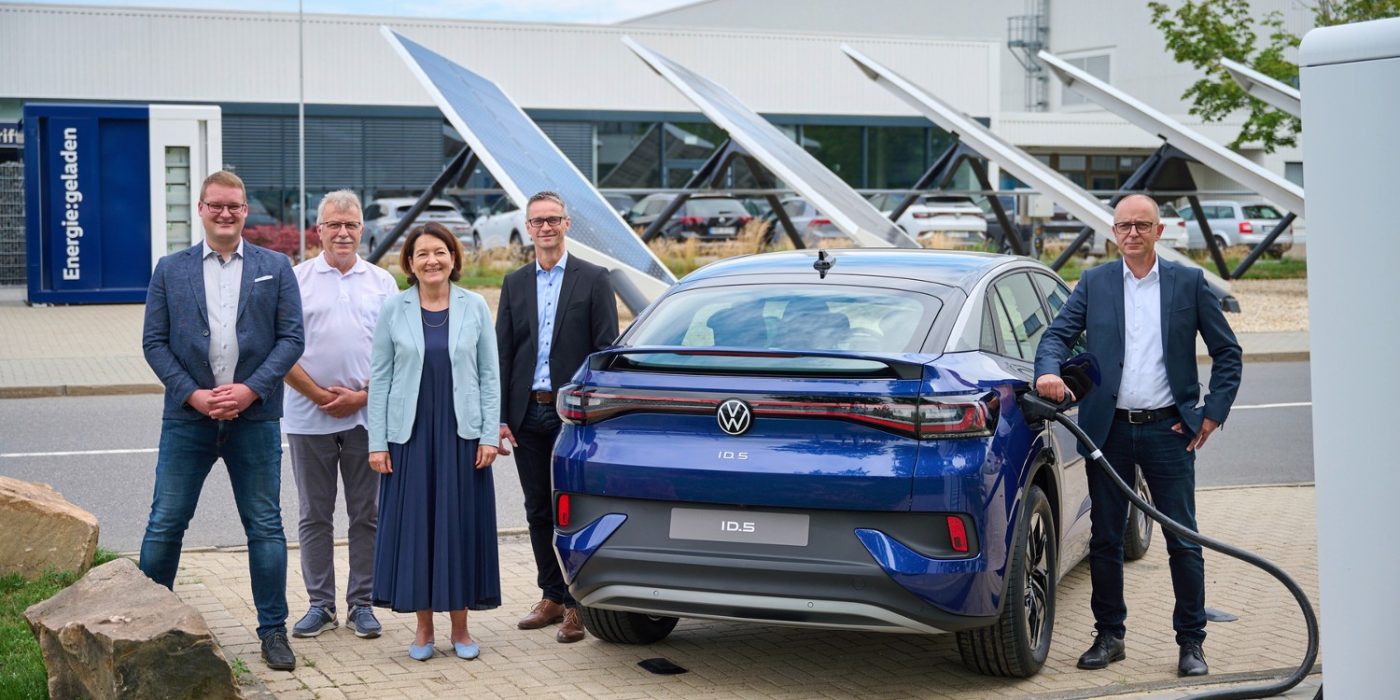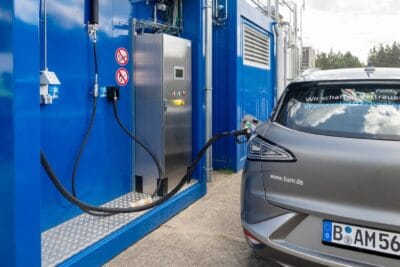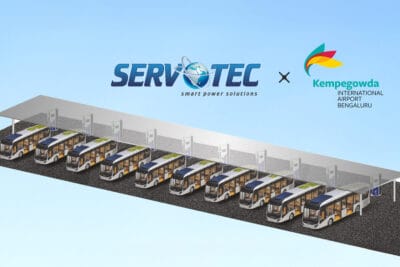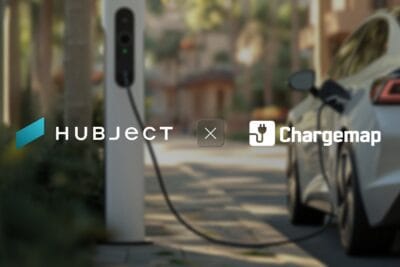VW launches HPC park with 2nd life batteries in Zwickau
Volkswagen has commissioned a fast-charging park at its electric car plant in Zwickau, which draws a large part of its energy from a so-called Power Storage Container (PSC). In future, the solution will also be used in residential areas, for example, as no medium-voltage transformer needs to be set up for the HPC.
The power storage container consists of 96 cell modules with a total net capacity of 570 kWh, which were installed in pre-production vehicles of the ID.3 and ID.4 and are now being given a “stationary connection application”, according to the statement. The PSC is a “cost-effective alternative to the transformer station”. By the end of the year, three fast-charging parks are to be in operation on the factory premises.
The charging park at Zwickauer Tor West consists of four charging columns with two charging points each. Each column offers up to 150 kW of power or 2x 75 kW if both charging points are occupied. The electricity for the charging park is generated, among other things, on the PV system located directly next door and otherwise drawn from the grid – since Volkswagen Sachsen has already been purchasing green electricity since 2017, all vehicles are thus charged with 100 percent renewable energy.
With the PSC, Volkswagen Saxony is relying on a solution that Audi is already successfully using for the first time at the Audi Charging Hub in Nuremberg. The container cubes consist of used lithium-ion batteries, which (in the case of Nuremberg) come from dismantled Audi test vehicles and serve as buffer storage for direct current.
The communication does not specify what connected load the 570 kWh PSC in Zwickau requires. With a storage unit of this size, however, several fast charging processes are possible – the grid, on the other hand, is only loaded with the lower connected load. VW also mentions another advantage in the press release: the intermediate storage of energy should avoid high basic costs that would otherwise be incurred in standby mode – even if no vehicles are charging. The transformer stations of fast-charging parks, which are connected to the medium-voltage grid, run around the clock; in addition, high initial investments are possible for these devices.
Like Audi, VW Saxony sees the first charging park with 2nd-life storage as a pilot project to gain experience with the technology. “The advantage is that fast-charging infrastructure can be built nearly anywhere, even if in places with a low-capacity grid connection. Residential areas are one example of where this could be used,” the statement says. However, the scalability of such charging solutions with 2nd-life storage naturally depends on the availability of retired battery cells. If new cells were installed in the buffer storage units, the initial investment would be significantly higher here as well.
“Reusing batteries is important for the future and it’s closely linked to the acceleration in the trend toward electric mobility,” says Karen Kutzner, Managing Director Finance & Controlling at Volkswagen Saxony. “With the power storage container, Volkswagen Sachsen is demonstrating a practical, cost-effective and useful case to enable cell modules at the end of their service lives to have a second life. This automotive power bank could be used wherever the capacity of the grid connection is too low but there is demand for powerful charging infrastructure. Innovative ideas like this could provide renewed impetus for the critical buildup of fast-charging infrastructure.”





0 Comments